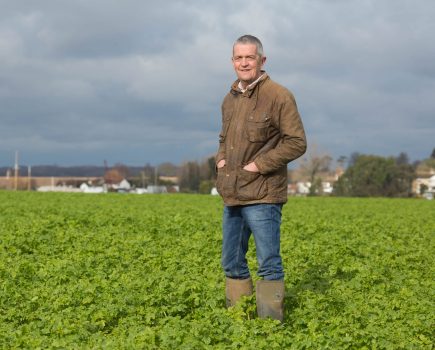 It’s June 2030 and a decade since ‘the virus’ (as the pandemic came to be known) brought the world to a standstill.
It’s June 2030 and a decade since ‘the virus’ (as the pandemic came to be known) brought the world to a standstill.
Supply chains creaked as they struggled to adapt to the changes that were so rapidly forced upon them and many growers were left with produce no one wanted to move off the farm. Even where it had been produced under a contract, farmers were left to carry the loss. Consumers were a lot quicker to adapt and sourced their food more locally, a move which led many of them to forfeit their weekly trip to the supermarket (which had been the norm) for good.
As the farming community continued to function normally in the face of the public health crisis, the forces of nature were doing their utmost to hamper their efforts. 2020 became the write-off year and many farmers began to wonder how they could continue to grow crops and whether they even wanted to anymore. It was a hard year and the one that the impact of climate change finally hit home.
It was that same year that the UK left the EU and trade talks were underway in spite of the pandemic. It was the year when it became crystal clear that the UK’s leaders were intent on becoming ‘little America’ and opening the doors to the import of cheap food produced in ways that weren’t palatable to most British farmers or consumers.
As it turned out, 2020 became a pivotal year for UK agriculture as these three major forces came together. UK farmers began to rally together and ‘take back control’ of food production and create a brand for British agriculture which imported food struggled to compete with.
Potato farmers made some of the biggest changes, perhaps because they’d been the hardest hit by the pandemic and climate change events. Many were beginning to feel they were on a treadmill as far as potato blight was concerned. The sprayer was going through potato crops religiously every week – even when the weather was dry because the risk of the ever-more aggressive strains of blight running rampant was just too high. They were just about unstoppable once they got going and, as a result, blight programmes were becoming increasingly complex and expensive.
2020 was the year that potato growers first began to wonder why they were still being asked to grow ware potato varieties without any blight resistance. They began to question if the consumer was really insisting on Maris Piper or King Edwards because consumer taste panels seemed to indicate there were newer varieties that tasted as good, if not better, with the cooking characteristics to boot. To the vast majority of consumers a potato was a potato, the biggest differentials being size and skin colour. Varieties were becoming almost irrelevant.
The potato trade remained stubborn at first to change their preferences, but potato growing was quickly becoming unsustainable. Growers collectively made their case that supermarkets were demanding them to grow varieties which meant they were being forced to ignore IPM almost completely, because the market was forcing them to ignore varieties with better genetics that were becoming increasingly available. That meant they weren’t able to fulfil their obligations under the EU’s Sustainable Use Directive, which still applied post-Brexit.
It was a watershed moment. After a steep learning curve during the 2020s, potato growers have now adopted a high level of technology and the sprayer, though not entirely redundant, is used strategically to support genetic resistance when blight monitoring systems dictate and towards the end of the season when the in-built variety resistance responds a little slower.
Evolution of the blight pathogen has changed and their ‘aggressiveness’ has become a measure of the past. Nowadays 2030 blight populations are monitored for their virulence, in much the same way as yellow rust was monitored in cereals a decade before. Changes in virulence during the season mean some varieties sometimes have a partial breakdown but because genes were stacked, this is rarely a disaster. As the market has moved away from being variety led, potato breeders have been able to advance their breeding programmes more quickly and respond to pathogen virulence changes by recommending varieties with a different genetic package.
On reflection, it seems impossible that potato production was ever solely dependent on a chemical arms race, which was ultimately destined to fail. So much has changed so quickly.
Based in Ludlow, Shrops, CPM technical editor Lucy de la Pasture has worked as an agronomist. @Lucy_delaP




